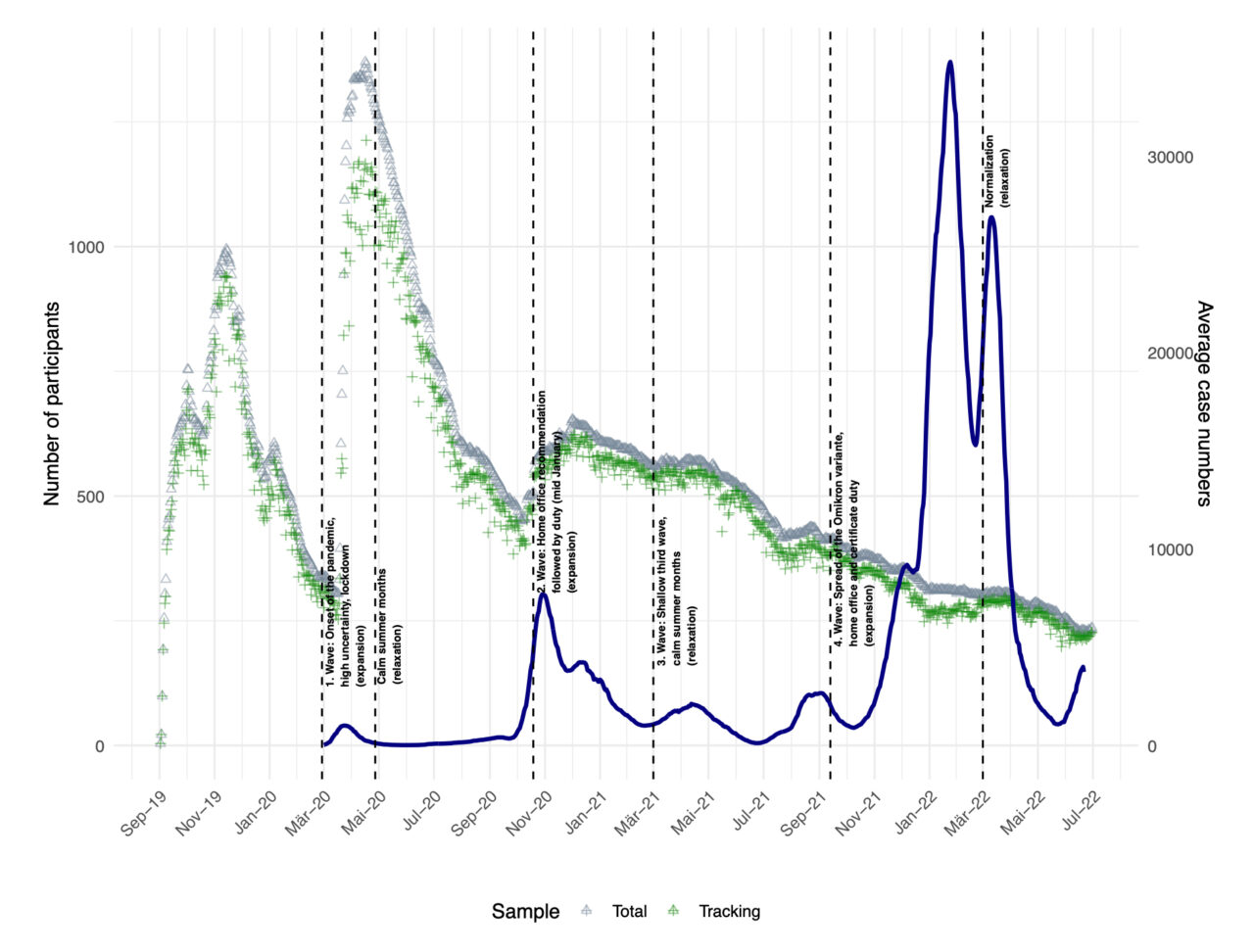
Daniel Heimgartner, Kay Axhausen
2022
Full text
The adjustments of mobility patterns during early stages of the pandemic are well understood. However, various effects are intertwined in these observations and therefore the findings’ robustness remains questionable.
The MOBIS-Covid data set provides a unique opportunity to put these initial findings in perspective as a large panel has been tracked from before the crisis up until today. Switzerland lifted all its measures counteracting the spread in mid February, reaching a potential new equilibrium in the months that followed.
A comprehensive set of descriptive indicators has been constructed in order to disentangle the narrative of the crisis from the perspective of transport demand. Special emphasis has been given to the question of how new hybrid working arrangements drive modal splits (as measured by mode distance shares). The descriptive findings are strengthened by a mixed multiple discrete-continuous extreme value model (MMDCEV).
We find a strong shift in modal splits from car and train, to more regional, slow-moving modes. This effect is very likely to persist with new working arrangements established. Car could in fact loose the most considerable mode share due to home office. We estimate an upper bound indicating that the car mode share drops from 62% to 52%). This contrasts previous literature: Once we control for working from home and commuting trips, car in fact looses importance. Train (being the other main commute mode) looses mode share in similar relative dimensions as car does.
Originally published in: Arbeitsberichte Verkehrs- und Raumplanung 1766